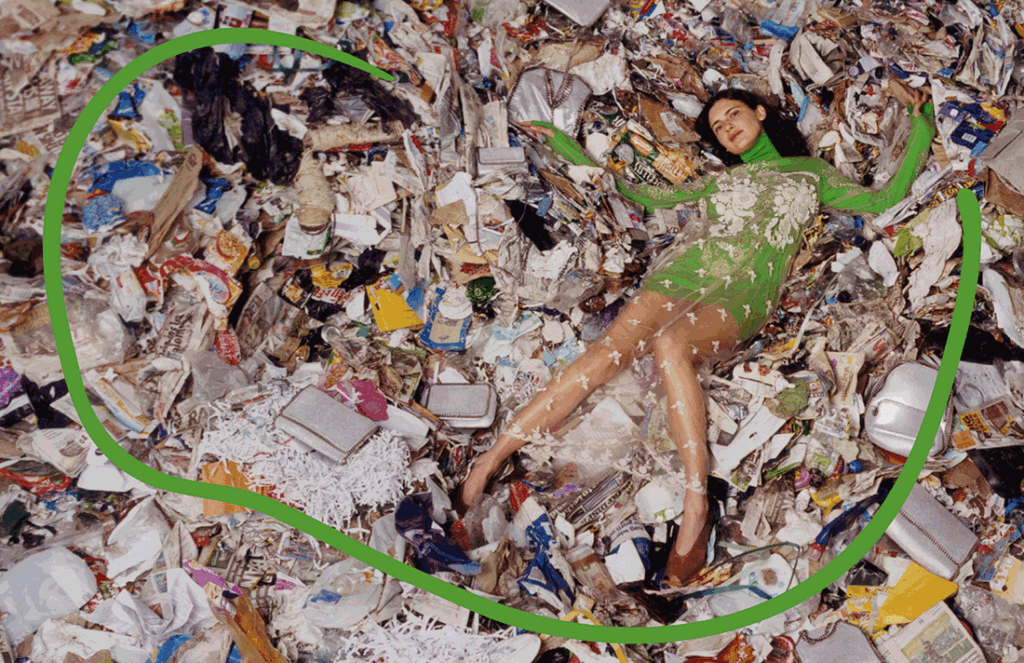We tend to lament the fact that our mobile phones are seemingly built in a way that their peak performance will expire after about two years. Officially, there’s a term for this: Planned Obsolescence. Anyone notice how our clothes’ vibrancy and quality don’t last, either?
1340 words; 6 mins read
Updated 5 Nov 2018
Above featured photo: Harley Weir/Stella McCartney Winter 2017 Collection.
Last week, French consumer protection authorities initiated an investigation in response to reports that Apple deliberately shortened the life span or effectiveness of its products in order to prompt increased consumer demand to replace them.
In December 2017 Apple acknowledged it intentionally slowed down iPhones with older batteries, but said the move was made to extend the life of its products.
In reality however, planned obsolescence is not a new concept.
Planned obsolescence occurs when a product designer creates a design that is meant to phase out after a certain period of time. This makes the product have a lifespan of a limited duration, often influencing consumers to upgrade to a more expensive or newer model.
For example, light bulbs may burn out right after their warranty period, non-removable batteries may be used on certain electronics, spare parts may not be available for certain vehicles, and fashion trends may make clothing quickly come out of style.
What’s bad about Planned Obsolescence is that it makes it obvious to the consumer that products that we buy cannot be considered a ‘forever’ investment, but as a ‘good for a few years’ kind of purchase. As a result, we have to fork out more of our hard-earned money to buy more new things, even if the product or a part of the product is working completely fine. Think about the amount of energy, resources and money that all of this needs. Not to mention the amount of waste that we as a society generate from this model. The reason? For companies to make moolah, simple as that.
On the plus side, our disposable habits sustain jobs for people who design and produce stuff. But does this mean this is the right thing to do?
The right thing to do is to keep honing and at the same time nurture the right skills. Skills from people who repair stuff. Yup, we need to mend things more – clothes, shoes, buckles, buttons. Fix things by servicing, give parts some lubricant, change over mechanism, replace the inner workings of a computer or fridge or clock. Yes, at some point things do break down. But they should really be designed to last forever. In the case of buying software, for example, the argument to support buying a new version of Microsoft Office for light personal use, is less than compelling to me.
It’s funny that some things we want to last forever – like diamonds, and Rolex watches and grandma’s vintage wedding gown. But some things we don’t give a stuff about. Why is this? Why can’t we appreciate things that we have now, tomorrow? Or twenty years from now? Or fifty?
We’ve been conditioned to think this is the way things are, so we accept it, but I can tell you – it wasn’t always like this. It all started with the American automotive industry back in the 1920’s. Read up on this topic on Wikipedia.
What’s tragic about this whole concept is that there are two dimensions to it: The functional obsolescence of a product, and the perceived obsolescence of a product. In the world of electronics and some moving parts, there may be an argument that obsolescence is necessary, but it’s really limited to innovation (and even so, one may argue this isn’t genuine innovation) and so-called product improvement.
In the world of fashion, it’s obvious the reason we buy new clothes more regularly than our previous generations was because of the heavy influence of ‘trends’ and the affordability of ‘not made to last’ garments – hence, ‘perceived’ obsolescence. I admit, I still have many friends who shop for function and purpose. But a growing number of young people are buying clothes to get a kick out of having something new, not necessarily because they actually need it. Planned Obsolescence that play with our minds; the psychological form of it. We wear clothes to protect our body from the elements, to play sports, to go to work. There are functional elements to these. But buying clothes when your wardrobe is still full of items you hardly wear? There’s no real necessity.

Photo of precious metals being extracted out of electronic waste.
This 2012 published paper by several authors from universities in USA, Canada and Hong Kong has looked into the rise of Fast Fashion and how this new wave of consumerism makes a case for Luxury Brands to champion the sustainability movement in the industry. (I shall touch on sustainability leaders in the fashion industry in later weeks.)
In it, a number of participants, aged between 21 and 35 were surveyed about their purchasing habits in relation to their personal values. It summarises that even though some participants have an increased awareness of environmental issues and aligned their actions to positively impact the cause, they don’t relate consuming cheap chic as a contributor of environmental monstrosity.
The study also confirms the unnecessary consumption of fashion due to purely aesthetics reasons. As one student participant eloquently puts it, “…when I see it on the catwalks or in magazines, I want it immediately.”
On perceived obsolescence, the study quotes Abrahamson (2011), in that he observes “Fashion, more than any other industry in the world, embraces obsolescence as a primary goal; fast fashion simply raises the stakes.”
“Fashion, more than any other industry in the world, embraces obsolescence as a primary goal; fast fashion simply raises the stakes.”
Is there a case for making products that last, though? Of course! Encouragingly, there are brands out there that have garnered true fans from around the world by being ‘forever’ brands that consumers can rely on, even with normal wear and tear of their products. Case in point: Osprey, the bag/backpack manufacturer, whose “All Mighty Guarantee” promises their customers that “..they will repair any damage or defect for any reason free of charge – whether it was purchased in 1974 or yesterday. If we are unable to perform a functional repair on your pack, we will happily replace it.”
Here is a link compiled in 2016 of brands that have lifetime or limited guarantees on their products.
Have you heard of Fairphone? It’s second-generation mobile phone, which was released in 2015, made a virtue of having components that could be easily swapped out by the device’s owners, even if they had no technical skills to speak of. By making a device with simple-to-replace parts, Fairphone is well on its way to reverse the Planned Obsolescence strategy; by extending the lifetime of its smartphones by fixing what’s broken only.
In a way, this notion of thinking about the lifecycle of a product can be attributed to extended producer responsibility (EPR), or product stewardship.
In the meantime, we have to change our own ways of thinking. Green Alliance, a charity and independent think tank in the UK, encourages a #circular economy where people repair, sell, and re-use devices – check out their 2015 report on opportunities in the UK, USA and India for the technology industry here. Perhaps the fashion industry needs a similar alliance!
Hopefully you as a consumer are wise enough to understand that even though we are part of this wheel of mass consumption, we can break away from it, little by little with the value of every dollar spent. Spend it on the things you absolutely need, and on brands that will value you.
From now on, every time you’re faced with an impulse to buy a dress off the racks just for occasional use, just think out loud: will you be tricked again? Dollars speak volumes. The signal you’re sending to Fast Fashion will be much louder, and clearer.
Join us in our Slow Fashion movement with the hashtag #ConscientiousFashionista and #wardrobetruths on Instagram, and follow us at @fashinfidelity.
Tags: #conscientiousfashionista #fastfashion #slowfashion #ethicalfashion #wardrobetruths #fashioneducation #obsolescence #plannedobsolescence #fashionisnolongertrendy #tricksofthetrade #fashion #gadgets #technology #circularity #circulareconomy #plannedobsolescence
References: Abrahamson, Eric (2011) “The Iron Cage: Ugly, Cool and Unfashionable.” Organization Studies 32: pp615–29. Why It’s Normal That Stella McCartney’s Latest Campaign Was Shot In A Landfill (web), last accessed 16 Jan 2018.




